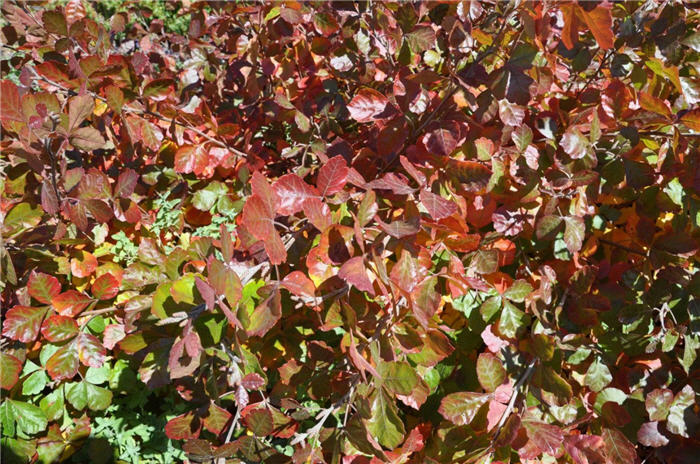| Botanical Name: Rhus aromatica 'Gro-Low' | |
| Common Name: Gro-low Fragrant Sumac |

-
Anatomy
-
Culture
-
Design
Plant Type
Shrub, Ground cover
Height Range
1-3'
Flower Color
Yellow
Flower Season
Spring
Leaf Color
Green
Bark Color
Brown
Fruit Color
Red
Fruit Season
Summer, Fall, Persistent
Sun
Full, Half, Shade
Water
Low, Medium
Growth Rate
Moderate
Soil Type
Sandy, Clay, Loam, Rocky, Unparticular
Soil Condition
Average, Rich, Poor, Well-drained, Dry
Soil pH
Acid, Neutral, Basic
Adverse Factors
Invasive
Design Styles
Formal, Mediterranean, Ranch, Spanish, Woodland
Accenting Features
Fall Color, Fragrance, Showy Flowers
Seasonal Interest
Spring, Summer, Fall
Location Uses
Background, Shrub Border, Foundation, Parking Strip, Parking Lot, Raised Planter
Special Uses
Cascade, Erosion Control, Mass Planting, Fire Resistant, Naturalizing
Attracts Wildlife
Birds, Butterflies
Information by: Stephanie Duer
Photographer:
Photographer:
-
Description
-
Notes
'Gro-low' is a naturally occurring dwarf form of fragrant sumac, and has a mounding, spreading habit with upward-arching branch tips, growing to about 18 to 24 inches tall and 6 to 8 feet wide. Tiny yellow flowers bloom at the twig tips in early spring before the foliage. Separate male flowers (in catkins) and female flowers (in clusters) appear on the same plant (monoecious) or, more commonly, on different plants (dioecious). Male catkins form in late summer and persist throughout the winter until eventually blooming in spring. Female flowers give way in late summer to small clusters of hairy, red berries which may persist into winter. Fruit is attractive to wildlife. Leaves are a dark glossy green, turning orange to red in the fall. A lovely, tough plant well suited as a ground cover for nearly anywhere.
About the only thing that can kill this shrub are wet, poorly drained soils. It will grow in rocky, sandy, clay, or loamy soils in nearly any pH. Full sun to mostly shade. Attracts birds and butterflies. Pruning is generally unnecessary, but if you feel compelled, do so selectively (see Guides). Indispensible low-growing, spreading groundcover; will thrive in parking lots, under trees, or on slopes.